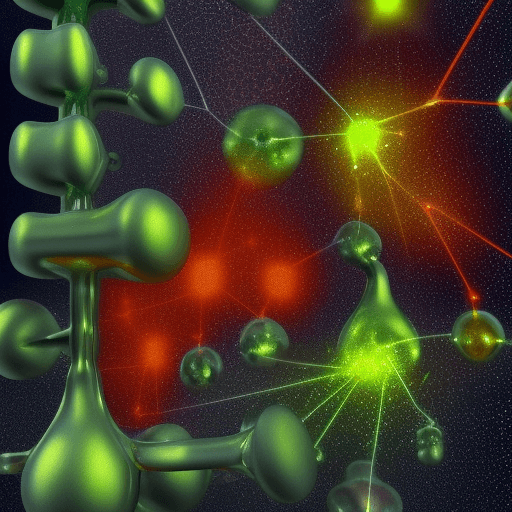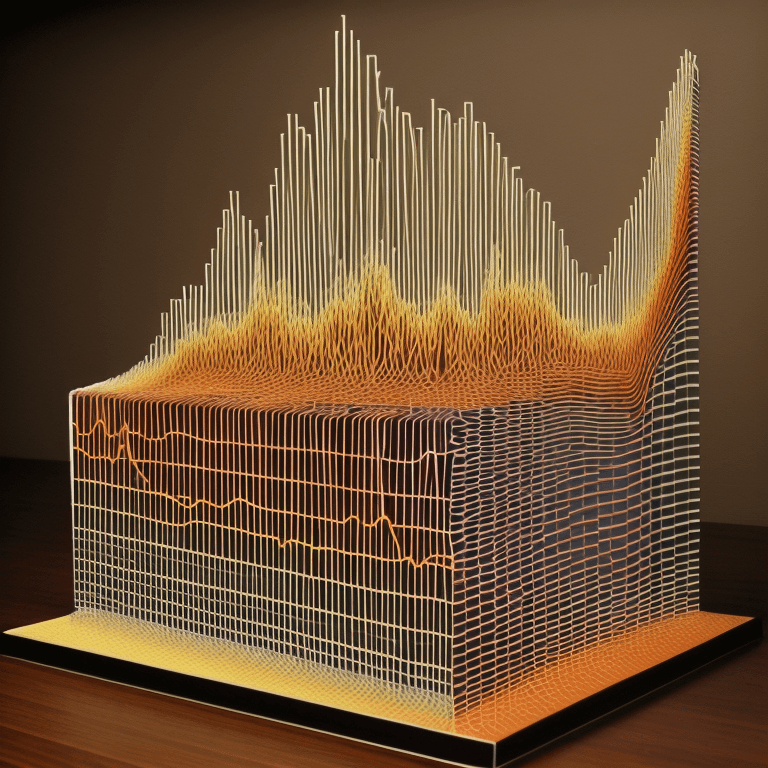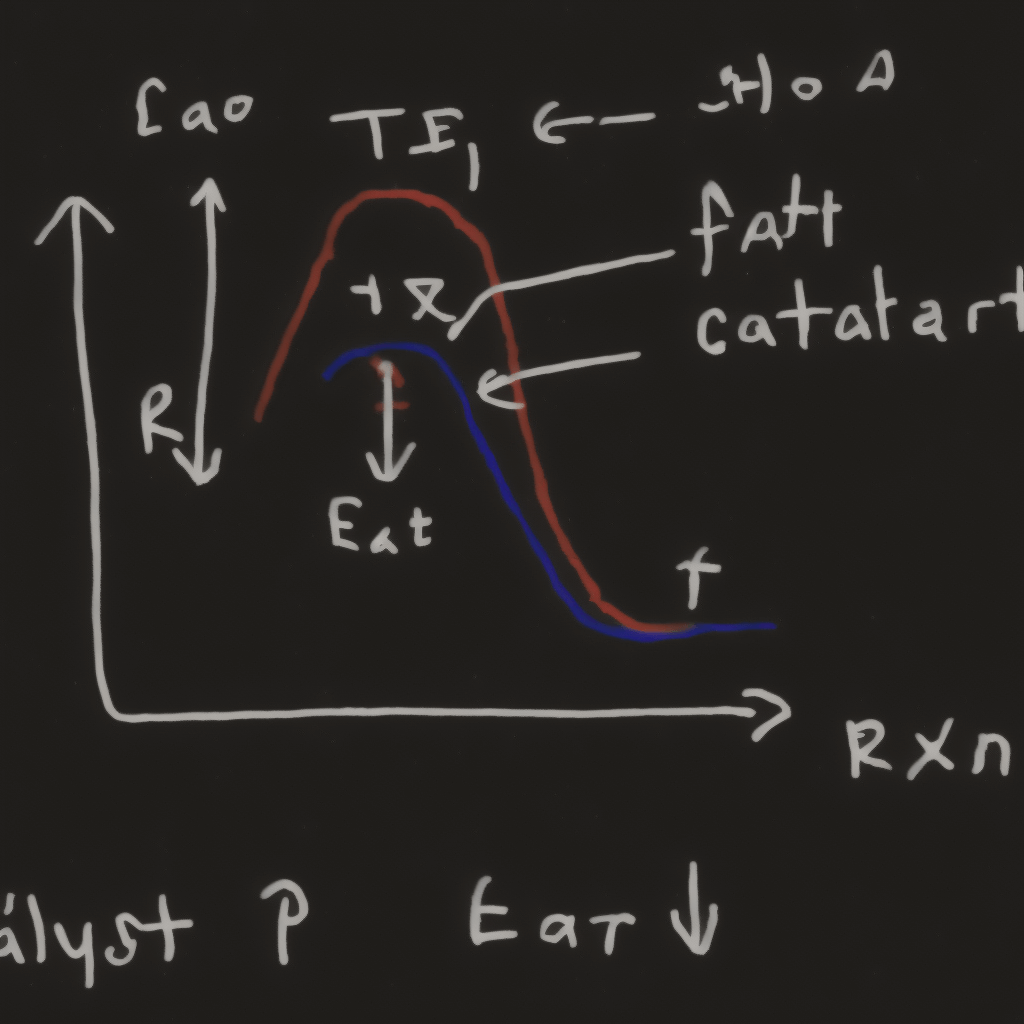An exothermic reaction is a chemical reaction that releases heat.
This can be seen in the exothermic graph, which shows the amount of heat released over time.
The exothermic graph is important for understanding how chemical reactions work, and it can also be used to improve safety procedures.
Let’s review the details of an exothermic graph and its importance.

An exothermic graph refers to the rate of energy released by a chemical reaction.
An exothermic process or reaction releases heat energy to the surroundings.
The 7 key features of an exothermic graph are:
- The graph shows the changes in enthalpy (heat) content of the system against temperature or time.
- It has a negative slope, indicating heat is being released by the system.
- There is a downward vertical displacement showing the exothermic process results in an output of heat energy to the surroundings.
- The magnitude of the downward displacement indicates the quantity of heat released during the exothermic process.
- Common examples of exothermic processes shown on such graphs are crystallization, precipitation, chemical reactions that release heat, and dissolving processes involving exothermic heat of solution.
- On the graph, the starting point shows the initial enthalpy content of the reactants.
- As the exothermic process proceeds, enthalpy decreases showing heat release until the final enthalpy content at the end of the process is reached.
So in summary, an exothermic graph has a negative slope showing decreasing enthalpy due to heat release to the surroundings during the exothermic process.
The downward displacement quantifies the total heat energy output.

Explain It To A Child
An exothermic graph is a way of showing how much heat is given out during a chemical reaction. The x-axis (the horizontal line) usually shows how many things are reacting, and the y-axis (the vertical line) shows how much heat is given out.
The slope of the line on an exothermic graph is positive, meaning that as the reaction progresses, more and more energy is released.
This is in contrast to an endothermic reaction, where the slope of the line is negative because energy is being absorbed by the system.
What is an exothermic graph?
An exothermic graph is a visual representation of how much heat is released during a chemical reaction.
The x-axis typically represents the number of reactants, while the y-axis represents the amount of heat released.
Exothermic reactions are often represented by a negative slope, as they release heat when they occur.
In general, the more reactants there are, the more heat is released.
However, the specific details of an exothermic reaction will depend on the types of reactants involved.
For example, some reactions may release more heat when they are started with a higher concentration of reactants, while others may be more exothermic when started with a lower concentration.

What is an exothermic reaction and what does it look like on a graph
An exothermic reaction is a type of chemical reaction that releases energy in the form of heat.
In most cases, the heat is released into the surrounding environment.
As a result, exothermic reactions are often used in industrial and commercial applications where thermal energy is required.
For example, many types of welding use exothermic reactions to generate the high temperatures needed to melt metal.

In contrast, endothermic reactions absorb heat from the environment.
While both types of reactions are driven by changes in entropy, exothermic reactions typically have a lower activation energy than endothermic reactions.
As a result, exothermic reactions tend to be faster and more energetic.
On a graph, an exothermic reaction will appear as a downward-sloping line.
- The steeper the slope, the more heat is released.
- In contrast, an endothermic reaction will appear as an upward-sloping line.
- Exothermic reactions are often represented by the symbol “ΔH < 0” while endothermic reactions are represented by the symbol “ΔH > 0”.
The importance of exothermic graphs for understanding chemical reactions

Exothermic reactions are important to study because they can be used to generate power and produce desired products.
The enthalpy change for an exothermic reaction can be determined by graphing the change in temperature of the system as a function of time.
This graph is known as an exothermic graph.
- By studying exothermic graphs, chemists can better understand the rate and extent of exothermic reactions.
- Additionally, exothermic graphs can be used to predict how a reaction will proceed under different conditions.
- In short, exothermic graphs are an essential tool for understanding chemical reactions.
How exothermic graphs can be used to improve safety procedures
Anytime a chemical reaction occurs, there is the potential for the release of energy.
- This energy can take the form of heat, light, sound, or electricity.
- In many cases, this release of energy is desirable, such as when a fire is started.
- However, there are also situations where the release of energy can be dangerous, such as in an explosion.
- By understanding how exothermic reactions work, it is possible to develop safety procedures that can help to prevent accidents.
- An exothermic reaction is one in which heat is released. The rate of heat release can be graphed over time, and this graph is known as an exotherm plot.
- By studying exotherm plots, it is possible to determine the conditions under which a reaction is likely to become violent.
For example, if the rate of heat release is high or the temperature reaches a certain point, then the reaction may become uncontrolled.
- By understanding these factors, it is possible to develop safety procedures that can help to prevent accidents.
- In some cases, it may be necessary to use cooling techniques or inert gas shrouds to keep the reaction under control.
By understanding how exothermic reactions work, it is possible to develop safety procedures that can help to prevent accidents.
Some examples of exothermic reactions
There are many everyday examples of exothermic reactions, such as when a candle is lit or when metal rusts.
In both cases, heat is released as the reactants are turned into products.
Exothermic reactions can also be used to generate power, as in the case of nuclear power plants.
The heat generated by these reactions can be harnessed to generate electricity.
In some cases, exothermic reactions can also be dangerous, as they can cause fire or explosions.
For this reason, it is important to be careful when handling materials that may undergo exothermic reactions. Just as exothermic reactions are crucial in welding to generate high temperatures, welding is used for durable and reliable vehicle repairs.
The future of exothermic graphs and their impact on science
In the world of science, there is always room for improvement.
Even the most groundbreaking discoveries are eventually eclipsed by newer, more advanced theories and techniques.
This is certainly true of exothermic graphs, which have revolutionized the way we understand chemical reactions.
However, there is still much to learn about these fascinating objects.
In the future, exothermic graphs may help us to unlock the secrets of dark matter and energy. They could also be used to create more efficient fuel sources or even develop new methods of space travel.
The possibilities are truly endless.
So while we should never rest on our laurels, we should also never forget that there is always more to learn about the universe we live in.
With that in mind, the future of exothermic graphs looks bright indeed.
By carefully studying an exothermic graph, chemists can gain a better understanding of the chemical reactions taking place.
Article Sources
Jacks of Science sources the most authoritative, trustworthy, and highly recognized institutions for our article research. Learn more about our Editorial Teams process and diligence in verifying the accuracy of every article we publish.